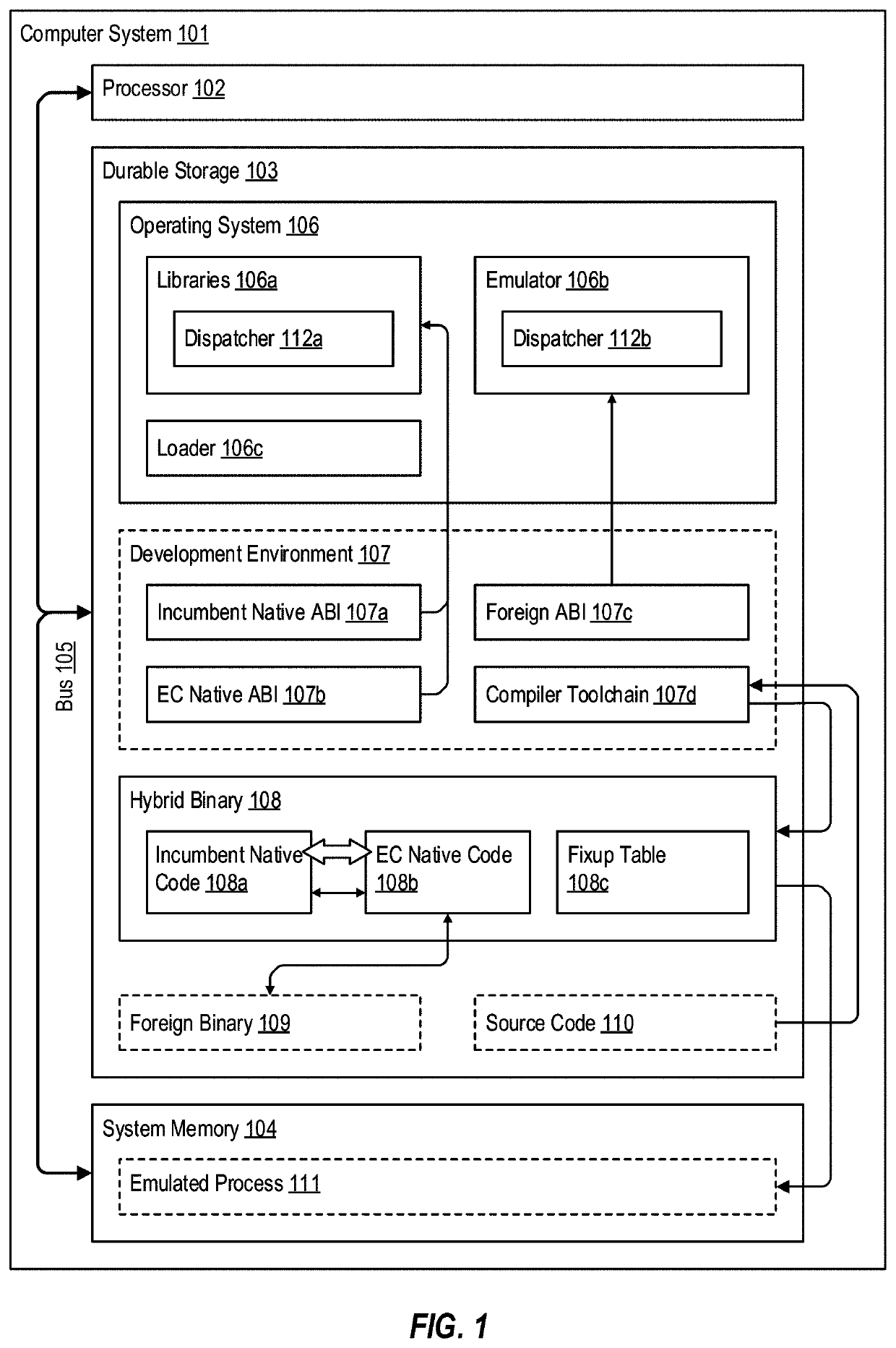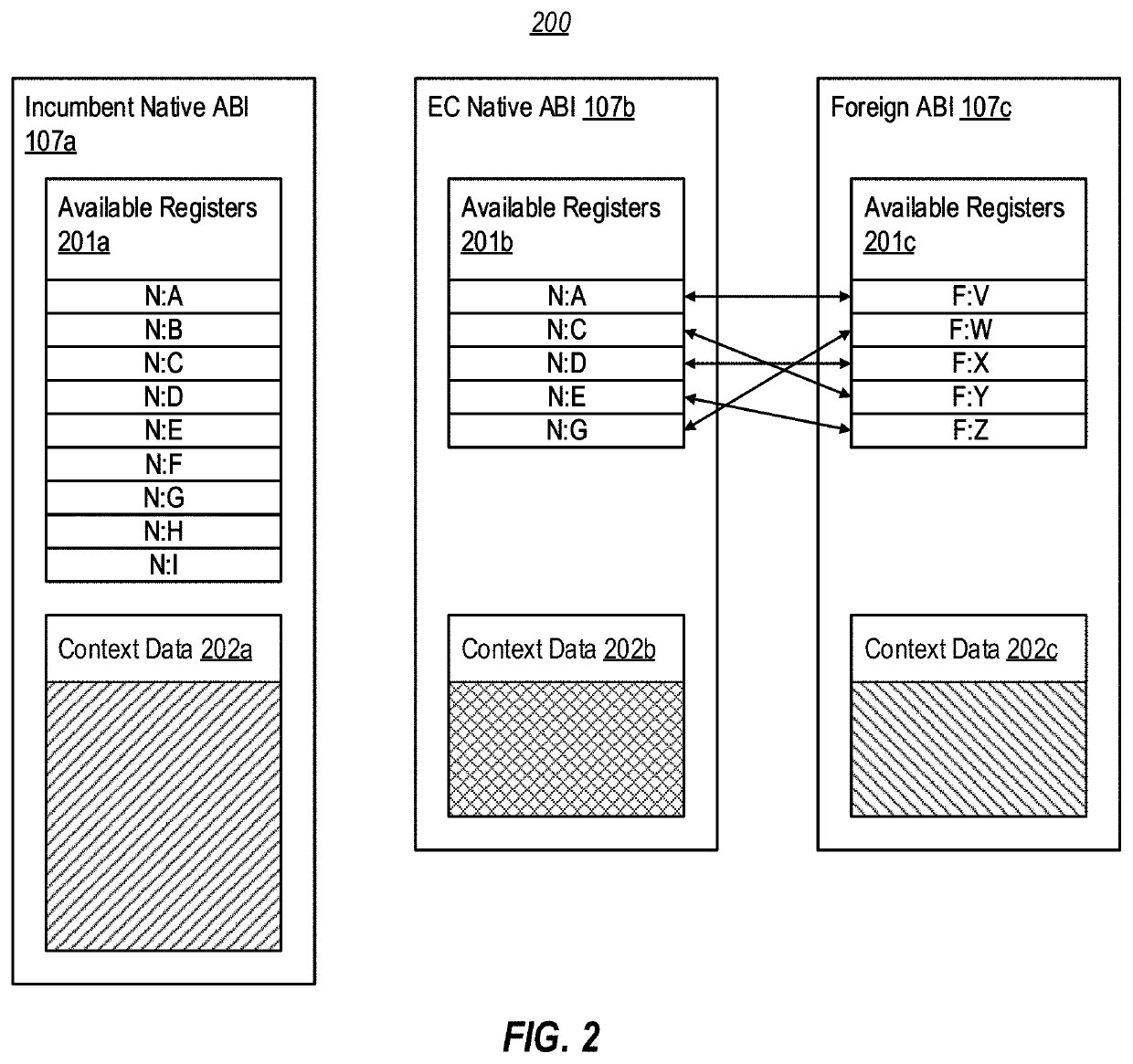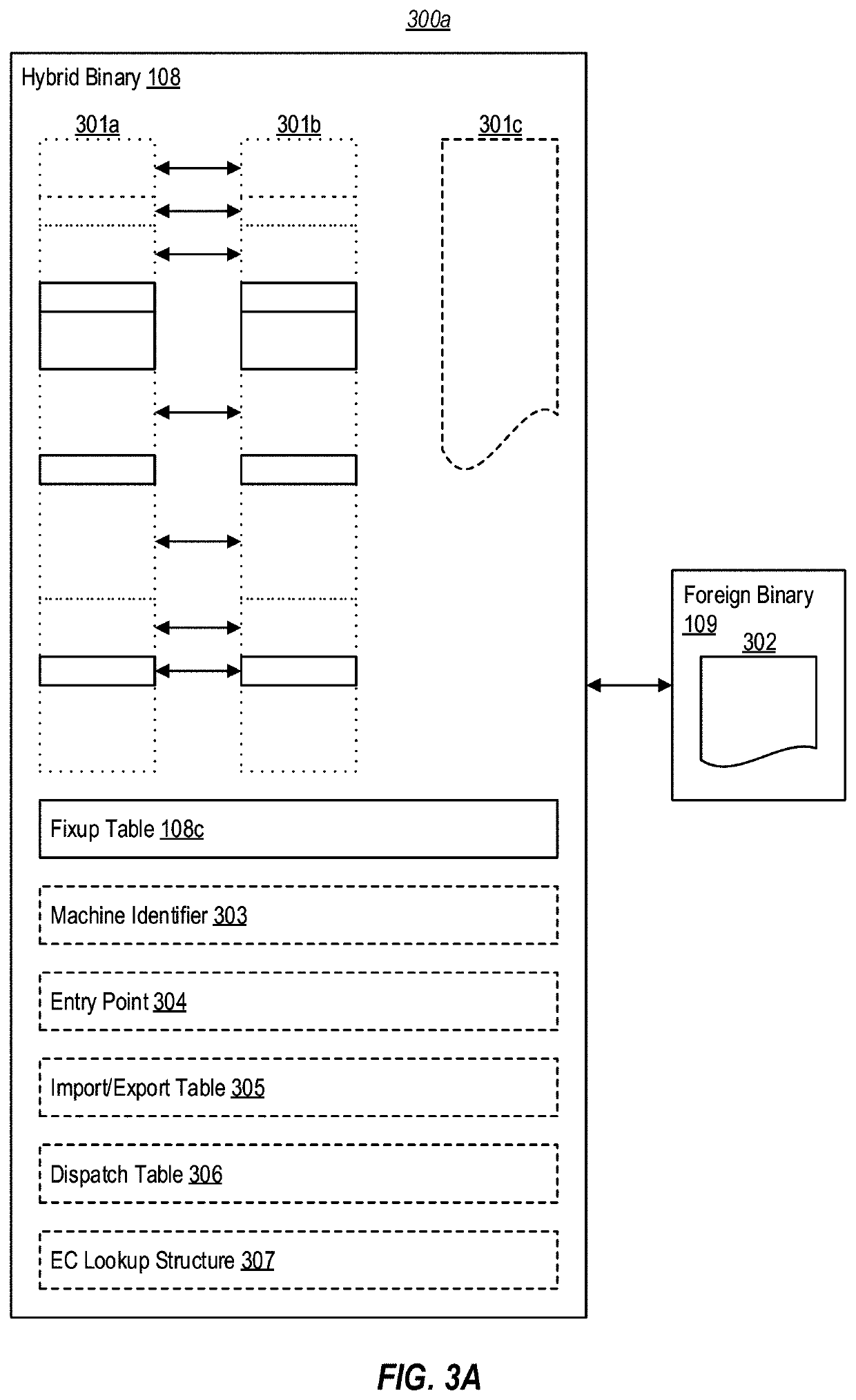Dual architecture function pointers having consistent reference addresses
a function pointer and dual architecture technology, applied in computing, instruments, electric digital data processing, etc., can solve the problems of application targeting x86_64 isa, unable to natively execute on any computing device having an aarch64 processor, and x64 abi cannot natively execute, etc., to achieve enhanced interoperability, facilitate “folding” and improve compatibility
- Summary
- Abstract
- Description
- Claims
- Application Information
AI Technical Summary
Benefits of technology
Problems solved by technology
Method used
Image
Examples
Embodiment Construction
[0028]FIG. 1 illustrates an example computer system 101 that facilitates generating and / or consuming native binaries (e.g., applications, modules, libraries, etc.) comprising “emulation compatible” (EC) code that is configured for close interoperation with emulated foreign code, and that provides a high level of interoperability and compatibility to the foreign code. Computer system 101 additionally facilitates generating and / or consuming native binaries that, while comprising EC code, are still compatible with “legacy” computing devices that are not aware of the EC features contained within these binaries.
[0029]In general, computer system 101 operates based on an EC native application binary interface (ABI) that exhibits many behaviors of a foreign ABI, thereby enabling native code targeting the EC native ABI to call (via an emulator) and interoperate with foreign code, such as legacy plug-ins, libraries, etc. In embodiments, the EC native ABI provides context and calling conventio...
PUM
 Login to View More
Login to View More Abstract
Description
Claims
Application Information
 Login to View More
Login to View More - R&D
- Intellectual Property
- Life Sciences
- Materials
- Tech Scout
- Unparalleled Data Quality
- Higher Quality Content
- 60% Fewer Hallucinations
Browse by: Latest US Patents, China's latest patents, Technical Efficacy Thesaurus, Application Domain, Technology Topic, Popular Technical Reports.
© 2025 PatSnap. All rights reserved.Legal|Privacy policy|Modern Slavery Act Transparency Statement|Sitemap|About US| Contact US: help@patsnap.com



